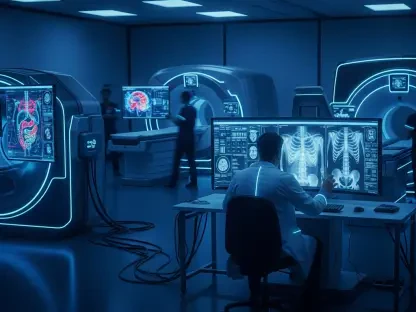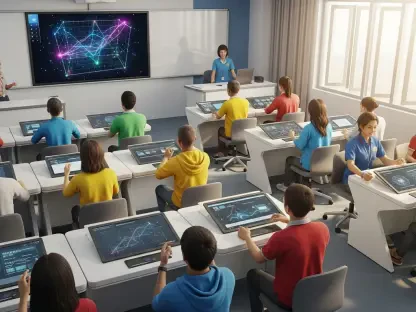Microsoft’s Muse AI marks a significant milestone in artificial intelligence by enabling the model to understand and interact with three-dimensional (3D) spaces similarly to humans. This capability transforms AI’s role in video game development, providing potential applications in various sectors, including architecture, retail, and manufacturing. The AI model, Muse, showcases advanced gameplay comprehension and generation, enhancing creative processes and preserving gaming history while maintaining human-centric design principles.
Key Innovations and Capabilities
Consistency and Diversity in Gameplay
Developed by Microsoft researchers and described in a paper in Nature, Muse AI adjusts to real-time gameplay needs by learning from seven years’ worth of human gameplay data from Xbox’s Bleeding Edge. Unlike conventional AI models that handle static images or text, Muse possesses a practical understanding of dynamic 3D environments, ensuring consistent physics and character behaviors. This diverse capability of Muse represents a significant leap forward in AI, enabling the creation of immersive and interactive experiences that mirror real-life scenarios.
Muse’s standout features encompass consistency in physics and diversity in outcomes. The model maintains coherent game physics and mechanics across extended gameplay sequences, addressing the challenge of generating realistic and stable game environments. Notably, Muse can produce multiple, varied but plausible game sequences from the same initial conditions, demonstrating a high level of creativity and divergences in gameplay scenarios. This ability to dynamically alter and adapt to different gameplay paths makes Muse a powerful tool for game developers looking to create engaging and unpredictable game experiences.
Persistence of User Modifications
Another notable capability of Muse is its ability to reliably incorporate and maintain user-initiated changes within the generated content. This feature ensures that player input is integrated, enhancing the personalized gaming experience. Muse generates up to two-minute gameplay sequences from just one second of game visuals, a remarkable technical feat. The model’s ability to preserve modifications demonstrates its sophisticated understanding of dynamic 3D environments, setting it apart from other AI systems that struggle with real-time adaptability.
The practical implications of this are vast. For instance, in a gaming scenario where a player alters the game environment or character actions, Muse can seamlessly integrate these changes, maintaining narrative coherence and physics consistency without disrupting the user experience. This not only enhances immersion but also empowers players with greater control over their gaming experience, making every playthrough unique and personalized. The resultant game dynamics offer a level of interactivity and engagement that was previously challenging to achieve with conventional AI models.
Broader Applications Beyond Gaming
Potential in Architecture, Retail, and Manufacturing
Peter Lee, president of Microsoft Research, envisions expansive applications of Muse in other sectors. Potential areas include architecture, where Muse could reconfigure residential spaces like kitchens, suggesting impactful design improvements. This could significantly streamline the design process, allowing architects to visualize and adapt spaces in real time according to client specifications. In retail, Muse could redesign spaces to enhance customer experience and efficiency, potentially revolutionizing how store layouts are conceived to maximize both aesthetic appeal and functional flow.
In manufacturing, creating digital twins of factory floors to simulate and evaluate different operational scenarios could optimize processes, reduce downtime, and enhance productivity. Katja Hofmann, senior principal research manager at Microsoft Research, notes that while high-quality data is vital for broad applications, the gaming industry provides fertile ground for data collection, thus driving AI advancements more effectively than other 3D environments. This robustness in diverse applications reflects Muse’s potential to transcend its initial gaming context, providing innovative solutions and efficiencies in a variety of fields.
Preserving Gaming History
Microsoft’s gaming division, Xbox, is exploring Muse’s potential to revive classic games. This technology could optimize older game titles for modern devices, preserving and revitalizing gaming heritage. By leveraging Muse, developers can breathe new life into vintage games, ensuring compatibility and enhanced performance on contemporary platforms. This not only safeguards the legacy of classic titles but also introduces these beloved games to new audiences who may have missed them the first time around.
Fatima Kardar, corporate VP of gaming AI at Microsoft, highlights this innovative use case as a testament to Muse’s versatility. By enabling the adaptation and enhancement of older games, Muse plays a crucial role in preserving the cultural and historical significance of gaming. The potential for Muse to dynamically enhance and adapt classic games ensures that the rich tapestry of gaming history remains accessible and enjoyable for future generations. This commitment to maintaining and enhancing gaming heritage underscores Microsoft’s broader vision of using cutting-edge technology to bridge the past and future of interactive entertainment.
Future Directions and Ethical Considerations
Encouraging Exploration and Research
The release of Muse model weights and a demonstrator tool under the Microsoft Research License signifies Microsoft’s commitment to encouraging further exploration and research within the AI community. Although not yet an enterprise product, these resources aim to inspire creative applications and broaden understanding of Muse’s capabilities. The decision to share these tools with researchers reflects a broader strategy to fuel innovation and collaborative progress in the AI field, ensuring diverse applications and the advancement of AI technology.
By granting access to these resources, Microsoft positions itself as a leader in fostering open research and development. This initiative is especially significant in an era where AI’s potential to transform various industries is rapidly expanding. Encouraging exploration and research in AI not only accelerates technological advancements but also ensures that these developments are approached thoughtfully, responsibly, and ethically. This commitment to ethical AI development underscores the importance of balance between innovation and societal impact.
Augmenting Human Creativity
Microsoft emphasizes that Muse is designed to augment human creativity, not replace it. The AI acts as an assistive tool, empowering game designers to craft hyper-personalized interactive experiences without undermining their creative autonomy. Muse’s role is to enhance the creative process by providing new tools and perspectives, freeing designers from repetitive tasks and enabling them to focus on higher-level design and storytelling. This approach reinforces the notion that AI can be a co-creative partner, enriching rather than diminishing human input.
The potential of Muse to augment rather than replace human creativity extends beyond gaming and into various creative fields such as architecture, graphic design, and film production. By leveraging the capabilities of Muse, professionals in these industries can explore new creative horizons, innovating in ways that were previously constrained by technical limitations. This collaborative dynamic between AI and human creativity showcases a future where advanced technology acts as a catalyst for amplifying human potential, rather than a replacement, fostering an environment where creativity and technological innovation can flourish in tandem.
Conclusion
Microsoft’s Muse AI represents a major leap in artificial intelligence, granting the ability to perceive and interact with three-dimensional (3D) environments in a manner similar to humans. This advancement has the potential to revolutionize video game development by enhancing creative possibilities and preserving the integrity of gaming history. Additionally, the innovative capabilities of Muse AI extend beyond gaming, offering transformative applications in various fields such as architecture, retail, and manufacturing. By demonstrating sophisticated gameplay understanding and generation, Muse AI can facilitate more intricate and engaging game scenarios, all while upholding human-centric design principles. This ensures that the AI not only aids in developing new content but also respects the player’s experience, making the interaction more natural and intuitive. As Muse AI continues to evolve, its impact on both entertainment and practical industry applications promises to be profound, redefining how we think about and use artificial intelligence in everyday life.









